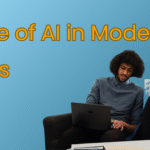In an environment where business decisions must move at the speed of data, traditional platforms can no longer keep pace.
Leaders of operations are coming to the realization that their best source of competitive advantage is not simply having more dashboards or tools, or even more software; it is having a visual operating model that connects everything in one view that makes sense.
This is not only a technology adaptation. It is a shift in thinking, shifting from managing operations through static platforms to orchestrating them through dynamic visual models that show how every metric, team, and process behaves in real-time.
The Issue with Platforms-Centric Operations
For the last decade, digital transformation has been platform-centric. Businesses spent millions on ERP systems, workflow tools, CRMs, analytics suites, etc., all geared to drive efficiency and control. But with each of these platforms being added, the complexity only increases.
The Outcome? Fragmentation.
Each platform has its own interface, data model, and workflow logic. Teams are left hopping between systems just to understand what is really happening. Rather than creating more agility, the collection of tools usually delays decision-making.
Operations leaders are faced with questions like:
- Why aren’t our measures showing reconciled metrics across teams?
- Why does real-time transparency still seem out of reach?
- Why can’t we see clearly how one process affects another?
The truth is, platforms were never designed to show how a business operates as a living, interconnected system. That is a visual operating model.
What Is a Visual Operating Model?
A visual operating model (VOM) is a digital representation of how your business operates; it is the end-to-end graphic of people, processes, technology, and performance connected to real-time data.
It is not an enhanced dashboard or pretty workflow. It is an intelligent layer.
Key Features of a Visual Operating Model:
- Visualize how teams and systems interact across functions.
- Connect KPIs or performance metrics to specific operational processes.
- Observe activities and outputs in real-time, not through reports, static or otherwise.
- Simulate how one change, or action, creates a ripple effect throughout the operation.
Think of it as transitioning from a list of applications to a living operating model—a single visual plane where leaders can see, understand, and adjust how the entire business operates so that there is a common understanding of how your business runs. This kind of clarity often begins with using a CRM automation platform that connects people, processes, and performance data into one integrated view.
The Change from “Platform” to “Model”
This is a somewhat covert, yet substantial shift.
Platforms vs. Models
Platforms were constructed around transactions—tasks, workflows, or data entry. Models, by contrast, are constructed around interactions; that is to say, how those tasks interact or how those data points interact.
A visual operating model provides leaders with an opportunity to view these interactions in progress. It turns the abstract, like KPIs and metrics, into something concrete and visible.
Example: Manufacturing Company
Let’s consider an example.
A manufacturing company may have several different platforms: supply chain management, production scheduling, quality control, and sales forecasting. Each system generates its own reports but has no seamless or integrated communication in between them.
With a visual operating model, however, those systems not only coexist; they form an interlinking network of activity, something that forward-thinking organizations now achieve through integrated business systems designed for seamless data flow and real-time visibility.
If the production system slows down, that model immediately visualizes how that productivity affects delivery times, inventory, or customer satisfaction scores. The leader of operatio ns is not combing through five different tools to understand how to work through a slowdown; they can see the full picture, in one view.
This is the ability to move from platform to model: clear, fast, and the ability to respond before small interruptions funnel through your system and create a bottleneck for your organization.
Why Operations Leaders Can’t Afford to Ignore This
The role of an operations leader is no longer about maintaining stability; it is about the ability to enable adaptability. Organizations that can visualize and react to operational data in real-time will outperform organizations that are stuck in a static mode of record keeping.
Here’s Why Any Operations Leader Should Get Onboard with Visual Operating Models:
-
True End-to-End Visibility
Instead of trying to create a mosaic of fragments from different dashboards, you can see everything in process from inputs to outcomes, all on one canvas. Blind spots are removed, and teams focus on the metrics that matter.
-
Faster Decision-Making
With data visualized and cross-referenced, there is no need for the introduction of manual data analysis. Operations teams can now make faster, informed decisions based on published streams of live data.
-
Alignment Between Strategy and Execution
A visual operating model connects strategic goals to operational KPIs, and leaders are able to observe how the day-to-days add to the bigger picture and revert. This activity ties the planning phase to execution.
-
Predictive Problem Solving
Simulating scenarios in the visual model allows teams to predict and understand the effects of the scenario before it happens. For example, if delivery time from a supplier increases by 5%, what is the downstream effect? The model can assess the future effects instantaneously.
-
Cultural Transparency
Visual operations encourage accountability. When everyone in the organization is looking at the same systems and KPIs, you will have collaboration that is less about the hierarchy of decision-making and more about decisions that are based on data.
Building a Visual Operating Model: What Does It Take?
Moving to a visual operating model is not just buying another software platform; it is about rethinking how your organization deals operationally.
Here Is How to Get Started:
-
Map Your Core Processes
Develop a mapping exercise to assess and identify the critical systems and workflows that define how your business operates. Every function—sales, finance, supply chain, customer service—must have a place in your model.
-
Define Key Metrics and Interdependencies
Define the relationships metrics have with each other, versus just looking at the KPI alone. What influences what? For example, how does employee efficiency influence delivery time or customer satisfaction?
- Connect Real-Time Data Sources
Connect your existing platforms to provide live data to the visual model. The goal is to not replace your existing platforms but rather bring them all together under one view of operations.
- Use Iterative Governance
A visual operating model is a living, breathing model. It will evolve as your business evolves. Establish governance processes to update, sustain, and expand the operating model as workflows change or evolve.
- Visual Thinking Training
Help leaders and teams think through systems and relationships; stop thinking about isolated functions. Visual thinking allows teams to understand complexity and aligns teams faster.
The Future of Operations is Visual
In the coming years, companies will compete more than just speed or scale; they will compete on clarity. Organizations that can see, understand, and act on what’s happening in the operations in real-time will move faster, respond smarter, and waste less.
Visual operating models are quickly becoming the foundation for that clarity. They turn operational complexity into strategic intelligence.
For operational leaders, this is not a nice-to-have; this is the next evolution in operational excellence. Those who embrace visual models while others hesitate will gain not only clarity but also change how decisions are made, teams collaborate, and execution occurs.
Because in the future of business, the future will belong to those who can see their operations as a model, not just a platform.




Comments
0 comments